|


text translation service for many worldwide languages
Many people who live in the countryside already know how to harvest nature’s bounty, wild food, wild herbs and medicinal plants that are available to anyone who takes the time and trouble to learn about wild foods that abound in their localities. Much of this knowledge has been passed down through countless generations, and many of the wild foods that made up the staple diets of peoples over the the past 250,000 years or more are still available today …
Techniques for finding, purifying, and storing water are also as ancient as the hills, and constitute the major part of what is termed the ‘bushcraft’ of many peoples. While modern camping, climbing and general back-country hiking equipment is manufactured using the same skills and knowledge of extreme environments that has similarly been passed down through the ages as the ‘traditional skills’ of many peoples …
Below are a small selection of books, videos and DVDs about basic ‘survival skills’ that have not changed much in the past 250,000 years or more, and these skills are practical, down-to-earth, tried-and-tested techniques that are still in everyday use by peoples who live closer to the land in many non-industrialised countries. They are also skills that are as relevant in North America and Northwestern Europe, as they are in the deserts, jungles and mountainous regions of every continent …
In subsequent pages there are more books, videos and DVDs about small-scale organic food production, survival skills and wilderness living, along with articles about becoming as ‘self-sufficient’ as possible in an increasingly uncertain world. Useful skills for expeditions, exploring, camping trips, as well as for those simply wanting to re-learn the ‘basic foraging tactics’ and ‘ancient survival skills’ of our ancestors – people who somehow survived the traumatic periods of uncertainty and panic which followed the civilisation collapses of the Bronze Age and earlier archaic times at the abrupt end of the last Ice Age…
Caused by the natural catastrophes and cataclysms of the distant past, some scientists now believe these Ice Age and Bronze Age collapses coincided with periodic increases in cometary activity. During such times our planet saw a corresponding increase in terrestrial bombardment episodes, which in turn gave rise to abrupt climate changes that the survivors of societies which were agriculture-dependent simply had to cope with or perish. It should be remembered that even during the last ice age human civilsation, including agricultural practices, were still very possible 30-40 degrees either side of the equator …
simply click on the book covers to order those titles directly from
Amazon.com,
or click on the EU English Edition link to order them directly from Amazon.co.uk. Some titles may not be available in both
editions. Amazon.com customers can also use the Quick-Click Buttons next to each title …
all comments are editorial and customer reviews posted on the
Amazon.com
& Amazon.co.uk
websites …
more books about ‘foraging’, ‘wild food’ and ‘living-off-the-land’ on pages:
2 |
3
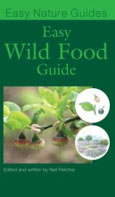
EU English Edition Only But Available Worldwide
|
|
“As interest in natural food and authentic recipes grows, the hunter-gatherer instincts of the population are reawakening and people are increasingly turning to fields and hedgerows, woodlands and the seashore as sources of ingredients which can bring the taste of wild food back into their kitchens. In spring, there is wild sorrel or young nettles to make soups, wild garlic for sauces or risottos and, for those fortunate enough to live in the right places, delicious morels. In summer beachcombers can gather marsh samphire and sea kale, while moorland will yield biberries and the woods and hedges produce a host of wild herbs. Autumn brings fruits and nuts and a wide variety of edible fungi and even in the depth of winter it is possible to find a range of ingredients for salads or to gather cockles from the beach at low tide. Illustrated with a unique combination of photography, which shows food in its wild state, and artwork which can be used to illustrate significant features and highlight key points for identification purposes, “The Easy Wild Food Guide” should find a place in every pocket or backpack on a country or seaside ramble at all seasons of the year.”
|
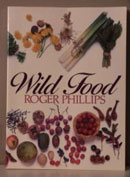
EU English Edition
|
|
“Roger Phillips, creator of “Wild Flowers” and its bestselling companion volumes, turns his attention and his camera to the wide range of good things to eat from the countryside and seashore. From the multitude of species that are safely edible, he has selected those that are actually attractive and appetizing as food.
Beautiful colour photography shows each species growing in the wild – for accurate identification – and prepared as an appealing dish. Well-known wine and food writers such as Jane grigson, Katie Stewart and B.C.A. Turner are among those who have contributed the recipes that accompany Roger Phillips’ photographs.”
|
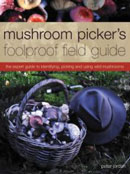
EU English Edition
|
|
“Discover the delicacies that hide in your garden, local woodlands or fields with this fully-illustrated A-Z guide. Learn the identifying features and habits of the most popular edible mushrooms, and try the suggestions for storing and cooking your bounty. Also included is a section on inedible mushrooms, clearly illustrating the poisonous species that you are most likely to come across. Quick and easy-to-use, this volume provides all the essential information you need for safe mushroom-picking. The photos and detailed descriptions of the mushrooms are quite helpful when trying to identify an edible species.”
|
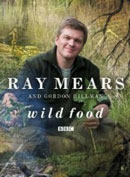
EU English Edition Only But Available Worldwide
|
|
“In WILD FOODS Ray Mears and Gordon Hillman lead us into the wildest parts of Britain to demonstrate the huge variety of indigenous foods that can be found. One of the most crucial skills to surviving in any wilderness is self-reliance – now, with this book, you can equip yourself with the knowledge to find tasty and sustaining foods in your own back yard and beyond.
Practical, enthralling, often surprising, packed with beautiful illustrations, WILD FOODS is an invaluable tool for any keen outdoorsman, and it is a fascinating read anyone with an interest in the little-known side of Britain’s natural resources.”
|
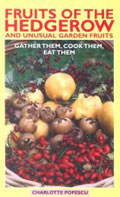
EU English Edition Only But Available Worldwide
|
|
“A book about gathering hedgerow fruits and cooking them with over 100 recipes – fruits include blackberries, elderflowers and berries, sloes, hips and haws, hazelnuts and garden fruits such as medlars and quinces.”
|
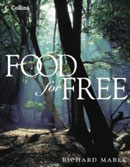
EU English Edition
|
|
“Food for Free by Richard Mabey was first published in 1972, since then it has been reprinted 11 times. An all-colour, revised version produced in 1989 has sold over 30,000 copies in the trade. A guide to over 300 types of food that can be gathered in the wild in Britain, Food for Free explores the history and folklore of the foods as well as explaining how we identify them and the best ways to cook and eat them. The new edition will bring the subject right up to date. Organized by season rather than food type Food for Free will take us through the year. Richard Mabey’s fully-revised text will be accompanied by stunning photographs, new recipes and a wealth of practical information on collecting, cooking and preparing. Beautifully illustrated, beautifully written and produced in a new, larger format Food for Free is designed to inspire us to take more notice of what is around us, how we can make use of it and how we can conserve it for future generations.”
|

EU English Edition
|
|
“Roger Phillips, creator of “Wild Flowers” and its bestselling companion volumes, turns his attention and his camera to the wide range of good things to eat from the countryside and seashore. From the multitude of species that are safely edible, he has selected those that are actually attractive and appetizing as food. Beautiful colour photography shows each species growing in the wild – for accurate identification – and prepared as an appealing dish. Well-known wine and food writers such as Jane grigson, Katie Stewart and B.C.A. Turner are among those who have contributed the recipes that accompany Roger Phillips’ photographs.”
|

EU English Edition
|
|
“Not enough tables of contents are enhanced by drawings of nuts, herbs, and root vegetables, but the table of contents in The New Oxford Book of Food Plants is, setting the tone for a book that clearly delights in the glories of the world’s bounty. Each chapter, including grain crops and fruits, spices and seaweed, legumes and mushrooms among its 19 topics, is a cornucopia of information and beautiful, educational illustrations. Take the chapter on oil crops, for example. Covering olives, sesame, peanuts, soy beans, sunflowers, and the rape plant, the prose describes where they grow and what the fruits look like, what kind of oil is produced and what it’s used for, how it’s made and how else the fruits may be used. Color drawings of the plants and their fruits are on the facing page.”
|
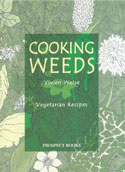
EU English Edition
|
|
“The weeds of the field and garden have two big advantages in the kitchen: firstly, they are free to anyone; secondly, they contain any amount of dietary goodness, often not so readily available form the anemic products of the hothouse and intensive farm. And what is really needed is a set of recipes to turn them into everybody’s favorite supper. This Vivien Weise provides in spades. With plenty of clear illustrations of the plants in question-ensuring that every reader will be able to identify the quarry when out gathering-Vivien has created a series of vegetarian dishes (all the recipes are meat-free_ with a defiantly modern slant: comfrey hamburgers, daisy ginger soup, dandelion salad with a banana yogurt sauce, dead nettle eggplant spread, ground elder layered pancakes, and many more. The great charm of this book is that you can go into the vegetable plot with two baskets: one for dinner and one for the compost heap. While gathering you supper, you weed the garden.”
|
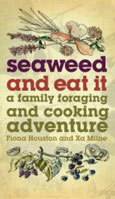
EU English Edition
|
|
“”Seaweed And Eat It” is the foodie’s answer to “The Dangerous Book for Boys”, and a nostalgic journey of rediscovery for the whole family. Part cookbook, part natural history guide, with tasty recipes, fascinating folklore and inspiring ideas for seasonal feasts, “Seaweed” leads the reader through the process of identifying, learning about and cooking unusual and wild native foods. From discovering edible wild plants and flowers, to creating delicious seasonal feasts, “Seaweed” puts the fun into foraging and injects a sense of adventure into preparing dinner. For anyone interested in the origins of their food – or who’s shocked by the price of elderflower cordial – this inspirational cookbook will ensure mealtimes are never dull.”
|
|
|
A Selection of DVDs from our:
Survival Skills Bookstore
“Ray Mears – Wild Food”
(2007)
by
BBC/Woodlore Ltd
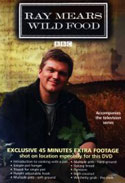
Region 2 DVD playable anywhere with a multi-region DVD player and compatible TV
“Ray Mears – Bushcraft
Series 1″
(2005)
by
BBC/Woodlore Ltd
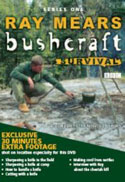
All Regions DVD playable anywhere on any DVD player and compatible TV
“Ray Mears – Bushcraft
Survival”
(2005)
by
BBC/Woodlore Ltd
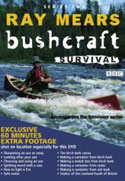
All Regions DVD playable anywhere on any DVD player and compatible TV
“Ray Mears
Extreme Survival
Series 1 & 2″
(2003)
by
Day Gardner Productions Ltd
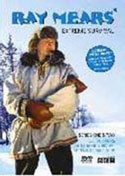
Region 2 DVD playable anywhere with a multi-region DVD player and compatible TV
“Ray Mears
Extreme Survival
Series 3″
(2003)
by
Day Gardner Productions Ltd
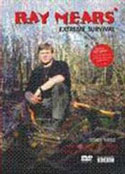
Region 2 DVD playable anywhere with a multi-region DVD player and compatible TV
|
more books about ‘foraging’, ‘wild food’ and ‘living-off-the-land’ on pages:
2 |
3
Ancient Survival Skills |
Practical Self Sufficiency
like to buy online? – get great extra rewards with an
Amazon.com Platinum Visa Card …
please take a look at the advice for
First-Time Visitors to Amazon.com
and reassure yourself with the
Safe Shopping Guarantee

please take a look at our Ancient Mysteries Bookshoppe for a wide selection of books
that challenge orthodox views of prehistory on every continent
Marine Archæology News Archive |
Astro-Archæology News Archive
|